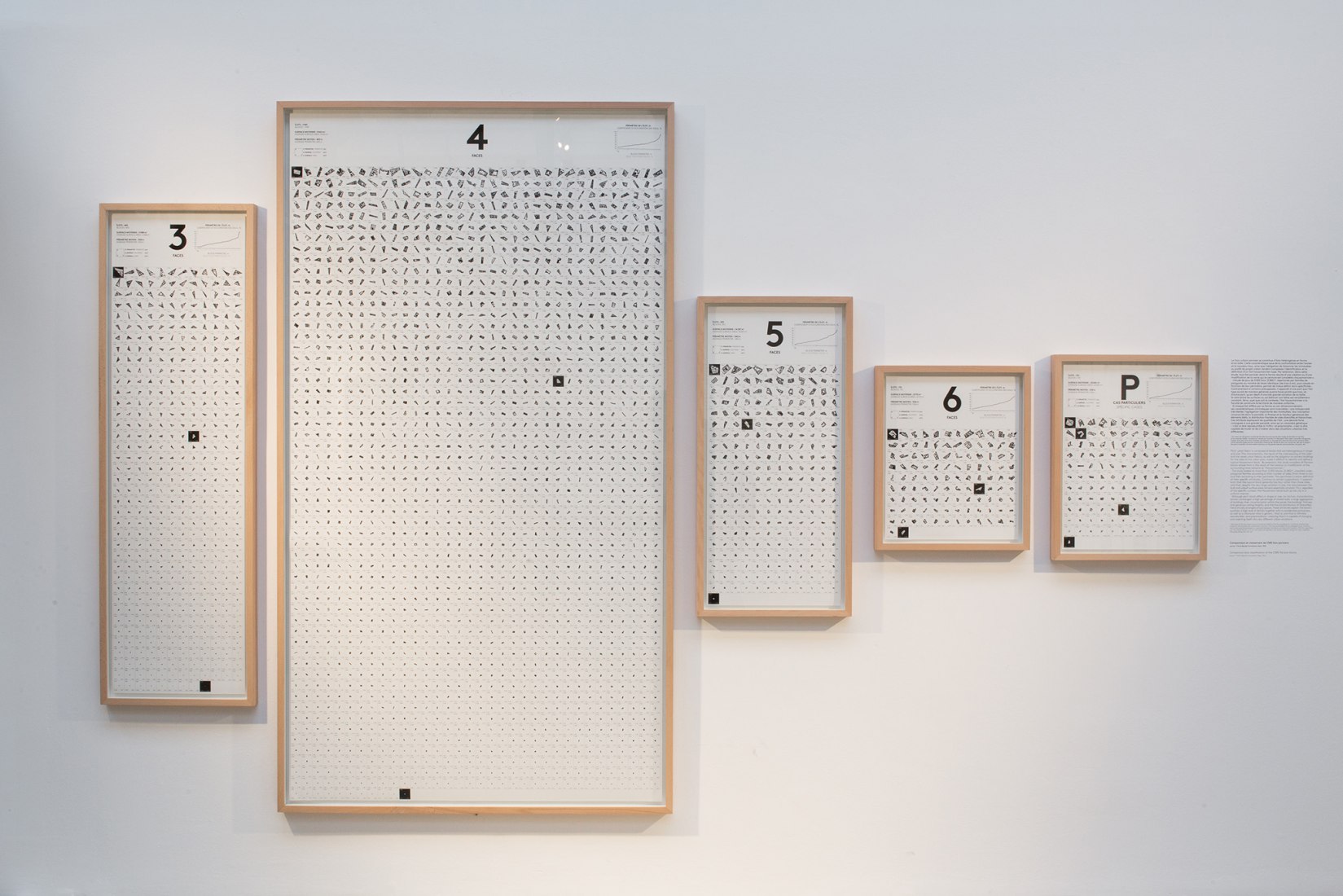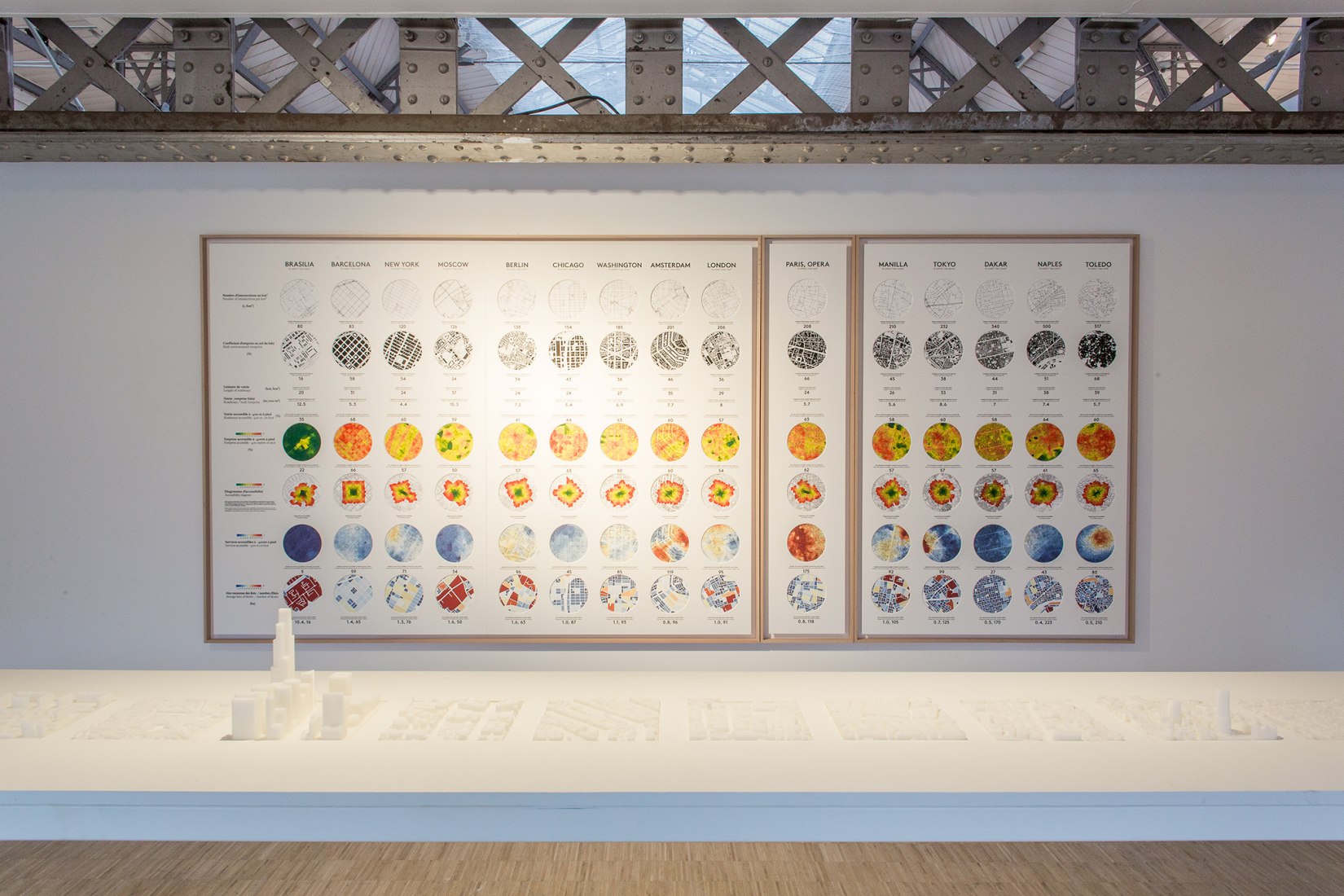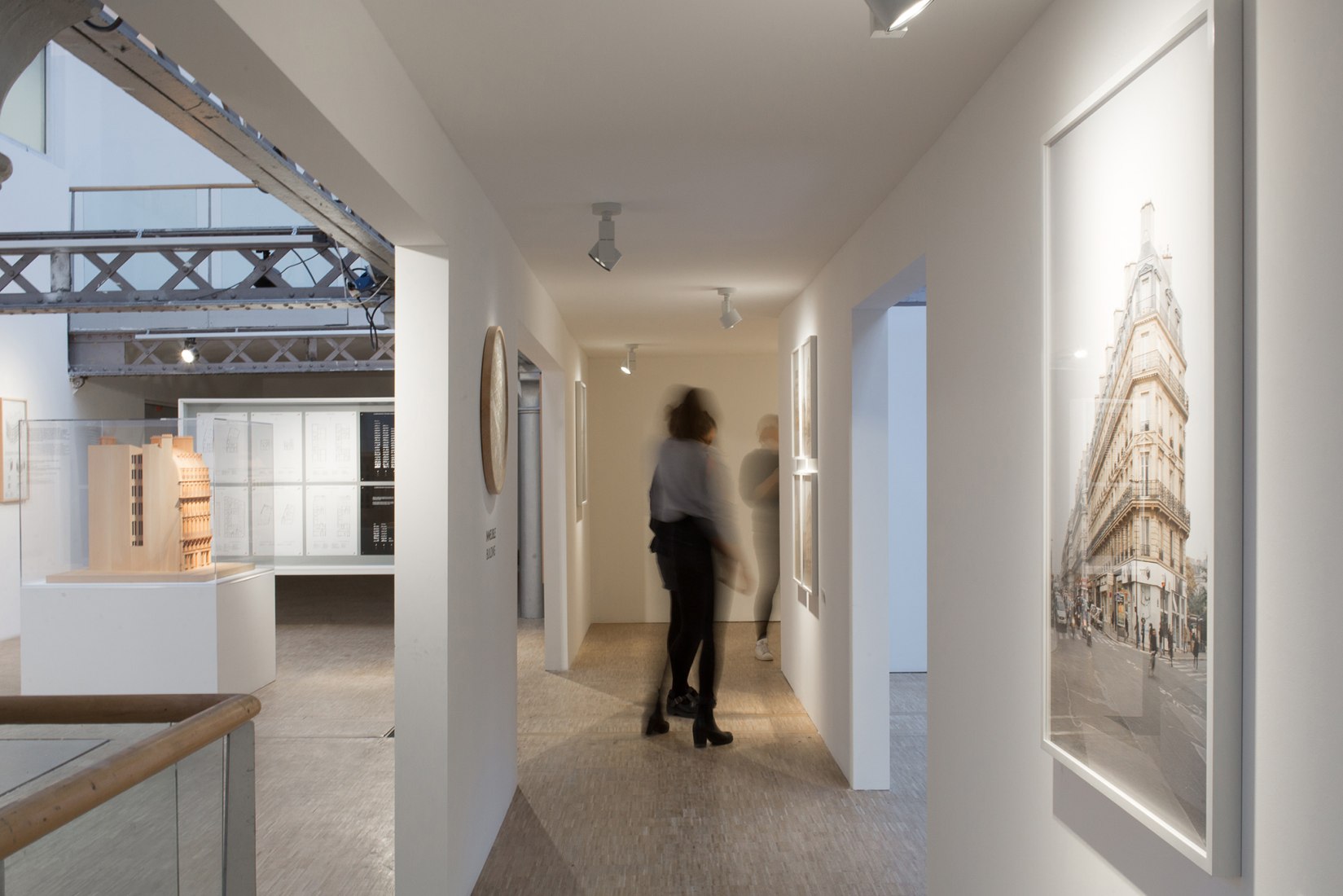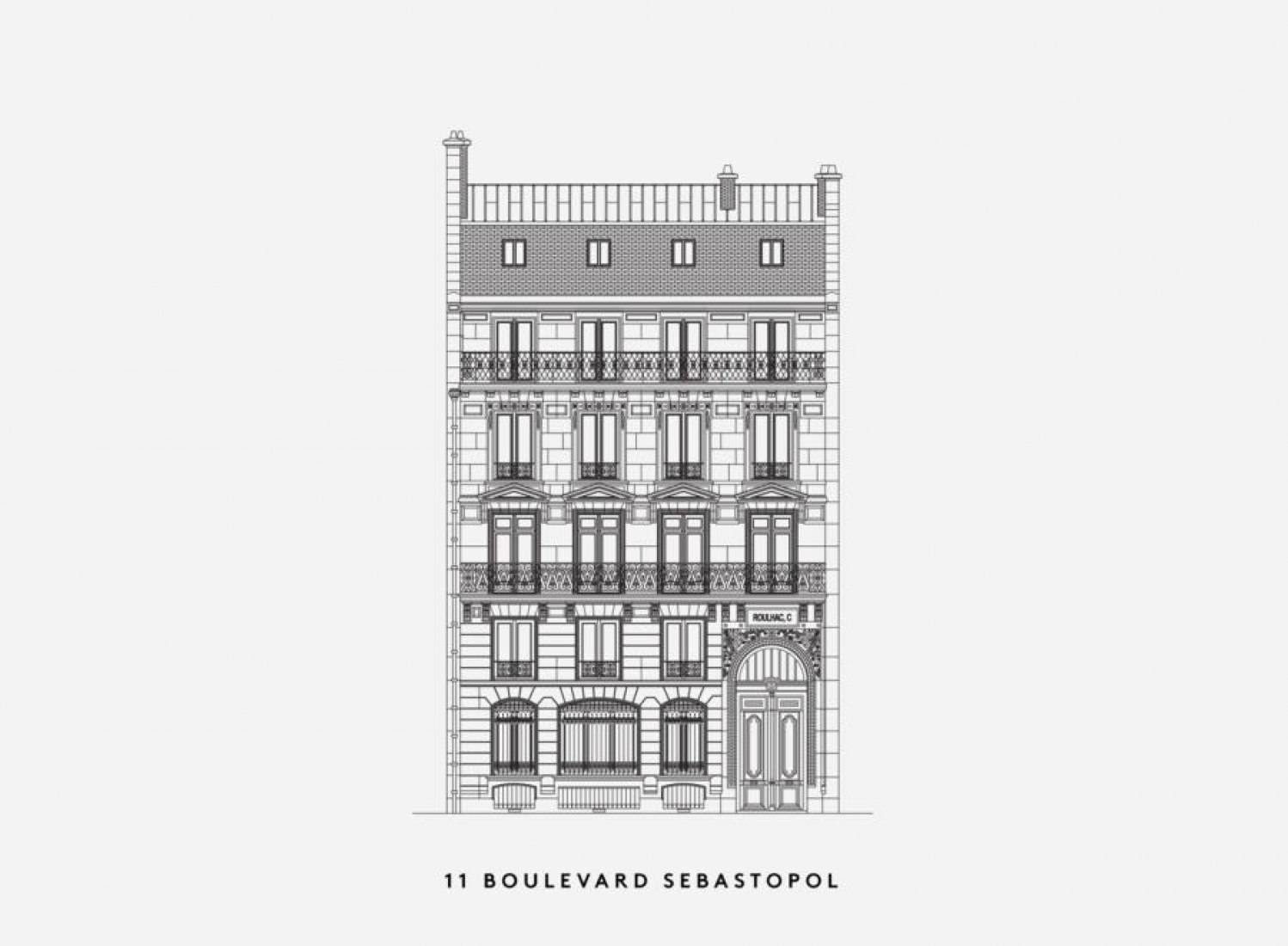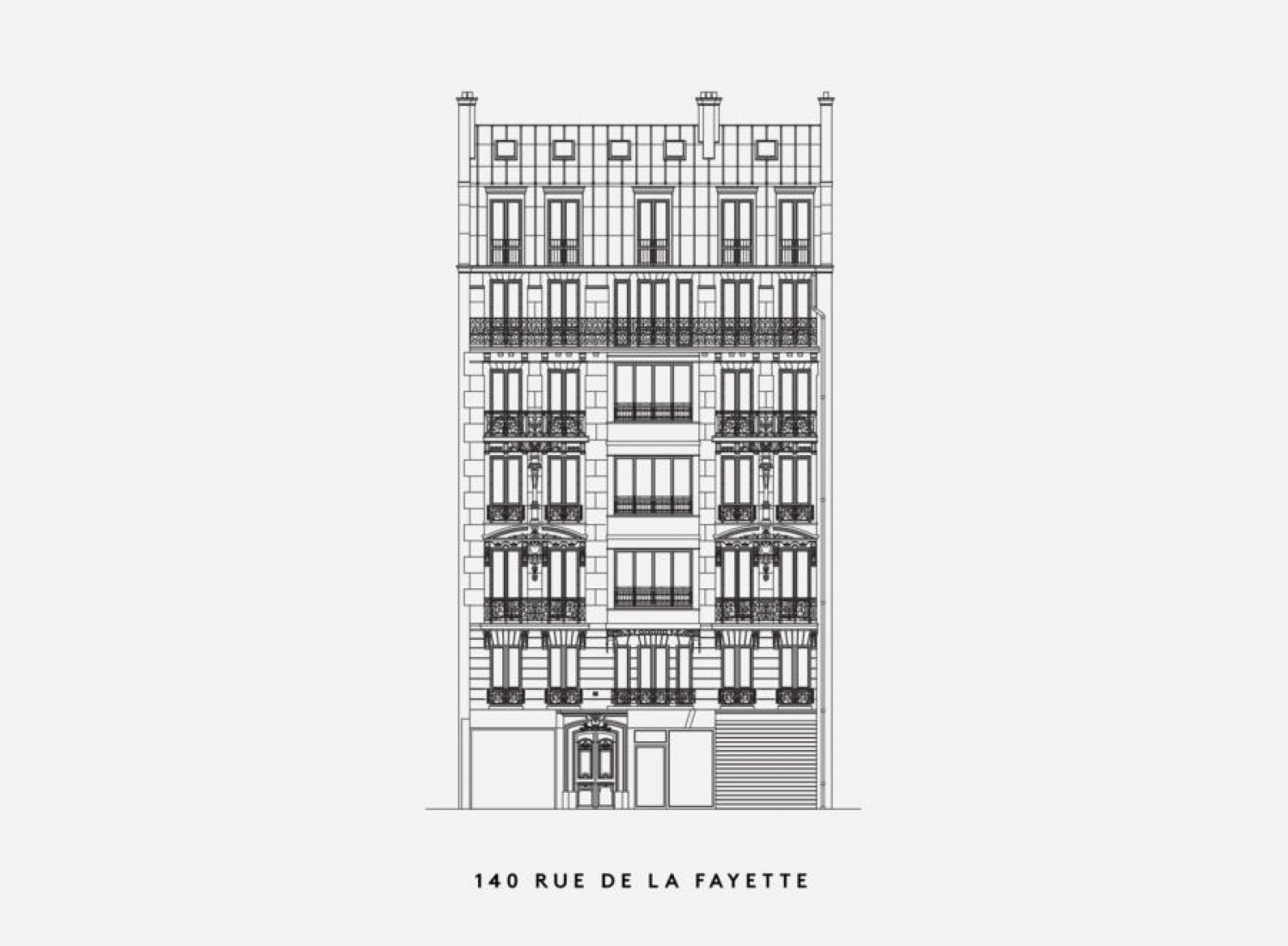Another exhibition section is dedicate to Charles Marville, official photographer for the city of Paris under the Second Empire. Charles Marville (1813-1879) is renowned for his series that document the streets and squares of Paris before and during the Haussmann’s modernization program.
Description of the project by LAN
Haussmann, Prefect of the Seine from 1853 to 1870, profoundly transformed Paris, above and below ground, and from its center to its outskirts. His name by extensión embodies an entire century of Works that still today determine the city´s organization and identity. But who among us would view the urban networks created during the Second Empire as an exemplary network for mobility? The 19th century block as a high-performance tool for creating a sustainable city? Or a Haussmann building as the very archetype of flexibility? The exhibition Paris Haussmann analyses and explains how the Parisian urban model in the present day is in fact able to deal with the challenges facing the cities of tomorrow.
The exhibition functions as a demonstration, examining the city´s characteristics in and of themselves, outside their historical context. More tan 100 drawings, plans, archived documents, photographs by Cyrille Weinwe, and numerous models enable visitors to rediscover this architectural heritage at all levels. The exhibition redraws, classifies, and compares the roadways, identifies the public spaces, organizes the blocks and the buildings in function of their current geometry.
By analyzing the city´s form to understand its meaning, this exhibition and its accompanying catalogue, which was concieved as a contemporary retroatlas of Haussmann´s territory, reinterpret the city both in terms of its volumes and is history and usages. The data acquired, togeher with the technologies used and canculations made by the architects Umberto Napolitano, Benoit Jallon and architect and engineer Franck Boutté, reveal a new urban structure that can be understood using contemporary criteria. How “walkable” is Haussmann´s urban fabric compared to that of the world´s other major cities? Why is the incredibly high density of the Haussmann model so comfortable? How energy-efficient are its blocks and buildings in terms of current standarts?
The sharing of walls, mutability, density, materiality, compactness, a balance of full and empty spaces, a diversity of activies… all the city´s capacities revealed in the exhibition Paris Haussmann provide us with an opportunity to teinterpret the criteria of contemporary urban design within a system where performance requirements exist in balance with the pleasure of inhabiting, where resilience becomes architecture.
Around the exhibition
Paris Haussmann was conceived as a multi-faceted presentation, and thus a number of events have been scheduled around the exhibition that are open to everyone: conferences and panel discussions, guided tours, urban walks, even at night, joint events with the musée Carnavalet, a new performance titled In the Baron´s Office, which helps young audiences discover Haussmann in an informative playful way, as well as, in partnership with Schneider Electric, sponsor of the exhibition Paris Haussmann, and Enodo Games, creators of the video game The Architect-Paris, the first ever Parisian hackathon, open to architecture students throughout France: Haussmann 2.0, 48 hours to revolutionize Paris!



